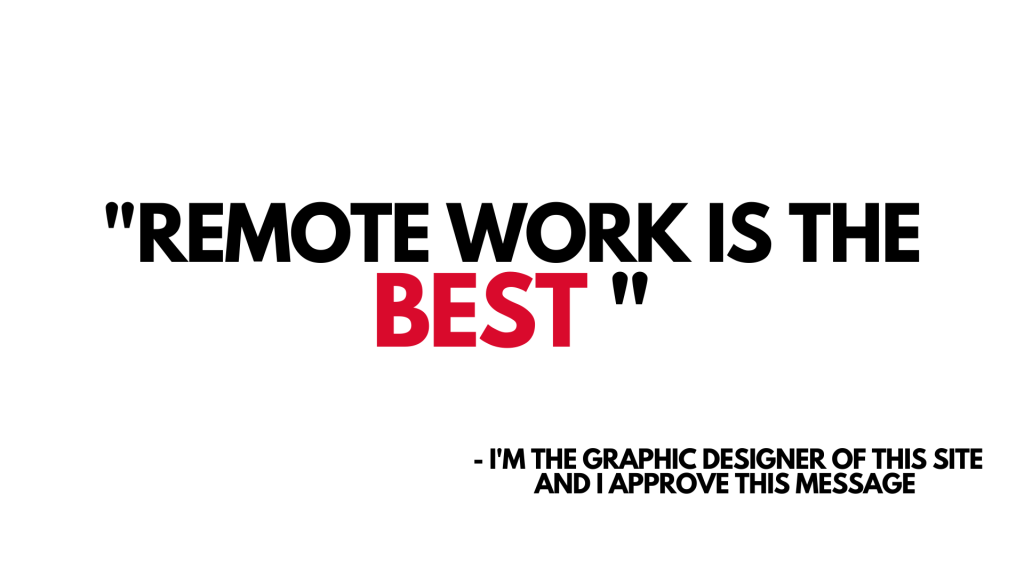A job that pays you and does not require you to be present anywhere physically – what a deal. Right?
As the world went into a shutdown, offices worldwide had to adapt and overcome the situation of, well, the world shutting down. We are very well over two years of the pandemic, yet most of the places and offices worldwide have a work-from-home system. In response to the uncertainties that COVID-19 had brought upon, many companies, universities, and schools went online – meaning that work and study were done remotely.
Even though everyone was adapting to the new world order, it was easier for some employees to find and create a work-life balance from home, and for some, productivity was dropping significantly because they could not get motivated at home. These particular situations affected the workforce’s performance and overall company success.
As today’s world is slowly shifting back to the old normal, working has been more feasible. Many companies around the globe are giving two options to their employees – either they can come to the office and work or work from home. This has created a lot of freedom and encouragement within the workforce, making the company more profitable and giving the employees more satisfaction.

While most companies around the globe are adopting the work from home behavior, most of the employees miss the “office feeling.” This is true because the office feeling can cause employees to perform better as they are less distracted and more focused and have the opportunity to socialize a network more with their peers and the community.
However, as this happens, challenges arise. So the question remains, what is our business supposed to do? Adapt to the new work culture, go back to the traditional ones, or mix both?
The Challenges Of Managing Remote Teams
Managers must be aware of the elements that can make remote work particularly taxing. Unfortunately, work-from-home programs were not on many organizations’ agendas until the significant outbreak of COVID 19 forced them to adapt to new ways of managing their personnel.

When high-performing individuals start working remotely, they may see a drop in job performance and engagement, especially if they haven’t had any prior preparation or training. The challenges of making remote teams can be many. Some of which are:
- Lack of face-to-face supervision
- Less work energy
- Lack of information flow
- Increase in miscommunication
- Lack of trust within teammates
- Distractions at work
- Company culture ignorance
- Scheduling Difficulties
5 Tips On How To Manage A Remote Team

Companies worldwide have unexpectedly found themselves in charge of distant teams. While remote work has its drawbacks, companies can do several simple and affordable things to make it move easier. Some of which are:
1. Build Strong Communication Channels
We can never oversell communication. The importance of communication between managers and their employees is massive. Therefore, building a reliable communication channel between managers and remote staff is crucial.
Sending out emails to communicate with remote staff is not sufficient. Most of the time, remote workers find it beneficial when the communication channels are more robust and more prosperous – such as videoconference, productivity trackers, and individual audio calls.
Managers who manage remote working employees should always have apps like Slack, Trello, Zoom, Microsoft teams, Google meet, and many more in hand.
2. Schedule Daily Check-Ins
Knowing what your employees are doing, what they’re working on, and how much time it is taking for them is very important. It might seem a little too much, but scheduling daily check-ins is very important for managers and teams who work remotely.
This can work in many different ways. For example, even if the company does not have enough funding to pay for an app, employees and managers can communicate with each other through Google sheets, where they can fill in their daily ins and outs and the work done.
3. Set Clear Expectations
Setting boundaries and work rules for remote employees to work from home can be equally efficient and valuable for the company, and the individuals. When clear goals and boundaries are set, employees who work remotely will familiarize themselves with the company culture, operating procedures, style guides, communication rules, guidelines, and expectations.
When managers already set a particular expectation towards their employees working remotely, there is no misunderstanding between the two parties regarding how things have to work.
4. Frequent Feedback Sessions
Giving feedback to employees is always a good idea. When managers and staff work remotely, feedback becomes even more critical. The constant communication between managers and remote employees can help foster a better and more motivating environment to work.
Giving frequent feedback to remote staff will help managers bring in more profit and get work done more efficiently and smoothly.
5. Encouraging Taking Breaks
Taking breaks, especially when working from home, is very essential. Encouraging employees to take breaks now and then will help them feel relaxed and fresher. It is also one of the most important and easiest ways to keep mental health in check. When employees are mentally healthy, they give out better performances and better results.
Taking a good amount of breaks frequently will help employees prevent burnout, increase creativity and help maintain a healthy work-life balance.
Of course, these are not the only methods that can help manage remote teams efficiently. However, these are five of the most important things that managers and companies can implement so that the team works in a better flow.
Collaboration Tools That Are Helpful With Remote Working

Here is a list of collaboration tools that are helpful with remote working:
Conclusion
As the New World order has started with many different companies adapting to working from home as working from the office, managing remote teams is not as difficult as it sounds.
Whether it is managing teams that work remotely or teams that work very closely in one physical space, being good at it needs time, attention, and consistency. However, managing remote teams can be fun with a good action plan and good tools.
